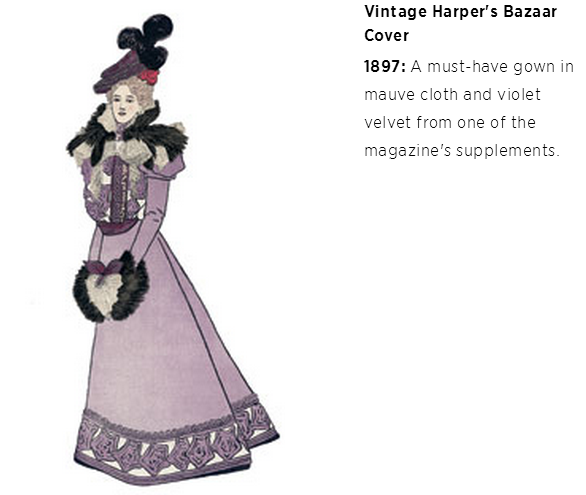According
to Cachon and Swinney (2011) digital technologies have changed not only the fashion
printing scope but also the whole concept of reading, buying and indulging in
fashion magazines: the online era. The fashion industry has changed tremendously
in the internet age and the change continues as new types of online business
models are needed to reach ever more demanding and digitalized consumers
(Doherty 2004). Online communities, such as electronic mailing lists,
discussion forums and weblogs, have become very popular as a consequence of the
digitized social world (Kozinets 2010). These factors influenced a new type of
magazine – online fashion world. Here are some samples how Harper‘s Bazaar has
evolved in terms of layout and covers decisions.


Moreover, consumers
seek not only information, but also entertainment and social relationships.
Marketing professionals have therefore recognised the need not only for
advertising messages, but also for the consumer’s encouragement to subscribe by
some rewards such as free products and services, vouchers, and discounts (Ryu
and Feick 2007). That can also be seen in the digital and printed magazines
worldwide (http://www.emeraldgrouppublishing.com/products/journals/journals.htm?id=jfmm).
Therefore,
it could be said that the difference between mentioned publications is not very
extensive. On the other hand, for a long time, content developers had a hard
time creating a distinction between simple websites and real online magazines.
But in the past year an excess of online magazines have emerged with three
common threads: multimedia, integration and convergence (Amed 2008). The new
magazines are a veritable multi-media source. For some content consumers,
particularly younger technology person types, a multi-media experience is the
only way to capture their attention: lots of videos, blogs, and communities. The
integration into different channels aroused a question how can an offline page
really come alive on the Internet? The answer is the creation of complementary
content that can be consumed separately and together, what can satisfy even the
most demanding “multitasker”. The third thread is convergence. Content
companies are integrating commerce models into their sites while commerce
companies are creating their own content, and thereby, becoming content
destinations in and of themselves (Amed 2008).
NY Times
T Magazine: With thought-provoking editorial, interesting images and full
page advertisements, this is the place to find the experience that most closely
captures that of reading a great offline magazine. But it doesn’t end there. T
also captures things into a whole new concept with integrated video and a daily
blog, “The Moment”, resulting in a true multi-media experience combined with
fashion, style, design and art (http://www.nytimes.com/pages/t-magazine/index.html).
Net-a-Porter
The Edit: Net-a-Porter puts out a new edition of its online magazine
every single week. It is a key part of making Net-a-Porter an online fashion
destination with both content and commerce. Just with one click on the magazine’s
images or trends, readers are instantly transported to the Net-a-Porter
commerce site (http://www.net-a-porter.com/magazine/239/contents)
Vogue.co.uk: This online magazine has also a
possibility to play with content and commerce combination. It also has really
well organised sections: Vogue Digital Editions, news, fashion shows, trends,
beauty, Vogue view, shops, Street Chick, where a lot of interesting topics can
be seen (http://www.vogue.co.uk/).
 |
| 1929 Spring trends Vogue |
 |
| 1947 Summer edition Vogue |
Therefore, online magazines are a rapid force led by
technologies and digital improvements, but nevertheless, it does not confront against
the printed publications as well (Kozinets 2010).
Sources: Journal of Fashion Marketing and Management,
Business of Fashion, Harper‘s Bazaar, NY Times, Net-a-Porter, Vogue.


















































